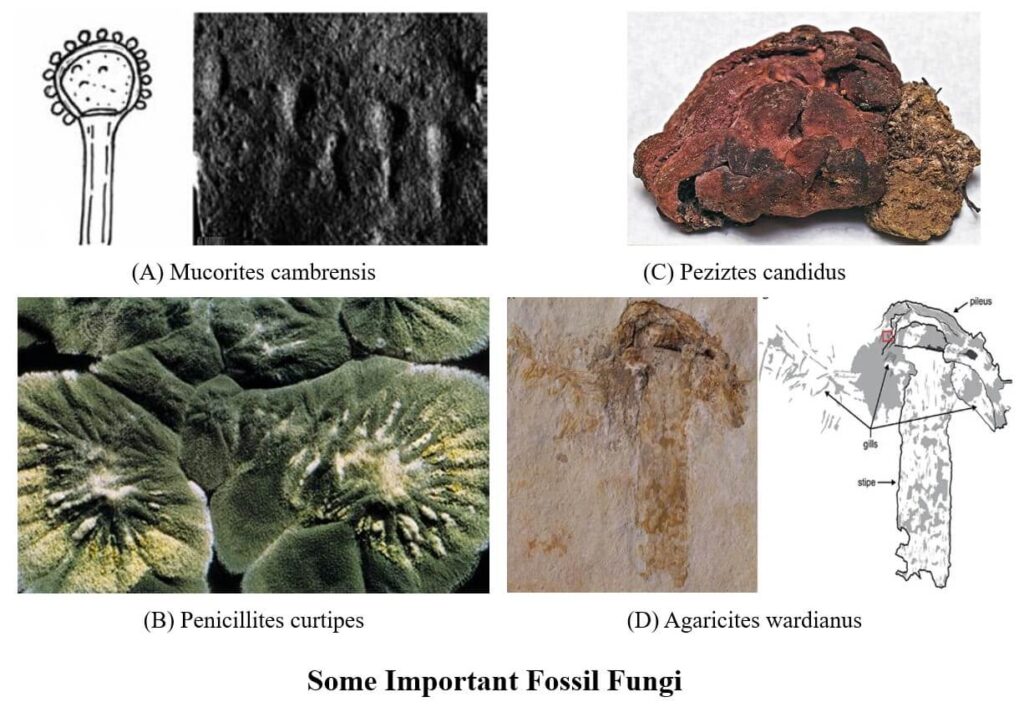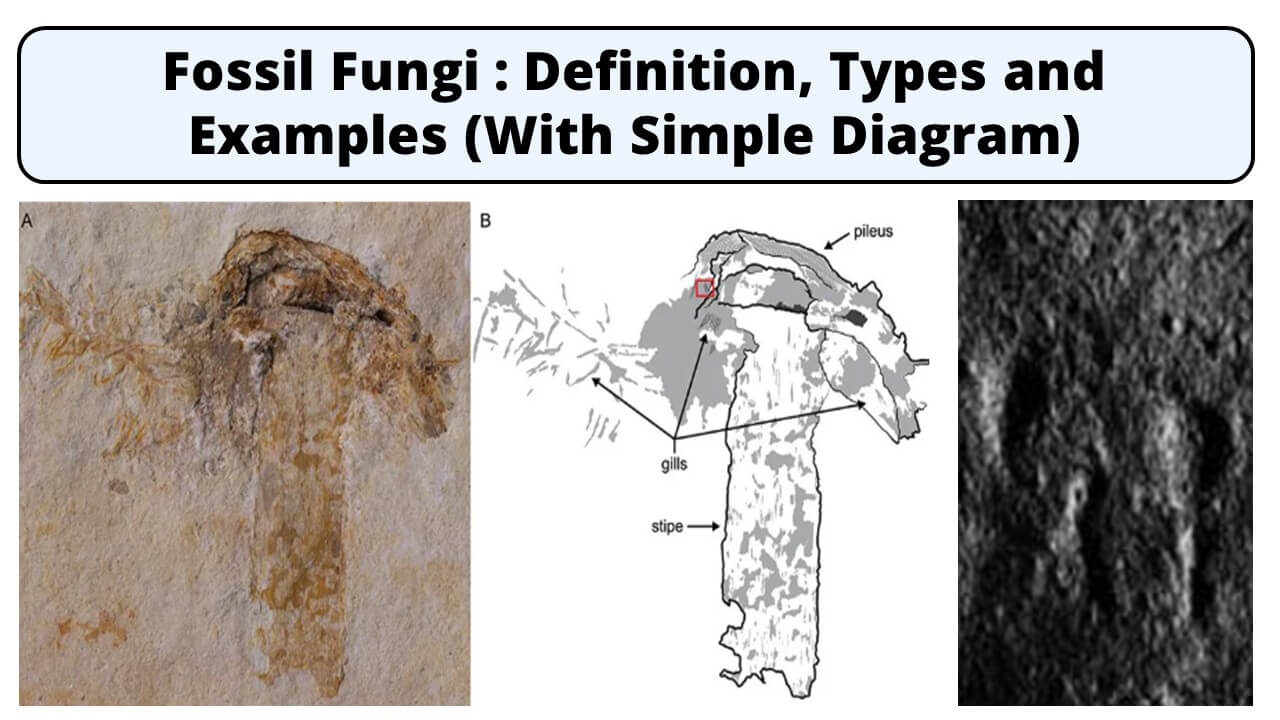In this article we will discuss about fossil fungi definition, types and examples
What is Fossil Fungi?
- Fossil fungi are the preserved remains or traces of ancient fungi.
- The fungi are not uncommon fossils, their fossils have not received a great attention compared to other groups of fossils.
- They are often difficult or impossible to identify due to limited information on their life processes and reproduction.
- The most common kind of fossil fungi is by incrustation with calcium carbonate.
- Some fungi inhabiting leaves and stems remain as impressions.
- James (1893), Seward (1933) traced the existence of fungi, to the Devonian period.
- Saccardo (1882) included 350 names of fossil fungi in his book “Sylloge Fungorum’’.
- Some of the fossil fungi are: Mucorites cambrensis, Penicillites curtipes, Peziztes candidus, Agaricites wardianus
Types of Fossil Fungi
I. Compression Fossils
- Formed by the compression of fungal remains into sedimentary rocks.
- Fossilized parts: Entire fungal body, hyphae, or spores.
- E.g., Paleopyrenomycites devonicus
II. Petrified Fossils
- Minerals infiltrate fungal structures and transform the organic tissues into stone.
- Fossilized parts: Hyphae, spores, or fruiting bodies.
- E.g., Glomites rhyniensis
III. Amber Fossils
- Formed when fungi are trapped in tree resin that hardens into amber.
- Fossilized parts: Hyphae, spores, or fruiting bodies.
- E.g., Archaeomarasmius leggetti (Cretaceous mushroom in amber)
IV. Trace Fossils
- Indirect evidence of fungal activity, such as growth or decay patterns.
- Fossilized parts: Imprints or damage caused by fungal mycelium.
V. Molecular Fossils
- Organic compounds indicating fungal presence in ancient environments.
- Fossilized parts: Chitin, sterols, or other molecular biomarkers.
Some Important Fossil Fungi

I. Mucorites cambrensis
- This fossil fungus resembling the modern genus Mucor.
- Found in sedimentary deposits with calcium carbonate incrustations.
- This fossil was discovered in Carboniferous-aged rocks in France.
- Represents saprophytic fungi important in nutrient cycling.
II. Penicillites curtipes
- This fossil fungus associated with the genus Penicillium.
- Characterized by short, simple conidiophores.
- Likely a decomposer of organic matter in ancient ecosystems.
III. Peziztes candidus
- This fossil fungi resembles modern cup fungi (Peziza).
- Known for its spore-bearing structures, likely forming ascomata.
- Indicative of symbiotic or saprophytic roles in ancient environments
IV. Agaricites wardianus
- Fossilized form of mushroom-like fungi (Agaricus).
- Suggests the presence of macroscopic fungal fruiting bodies in fossil records.
- Likely contributed to early decomposition processes.
